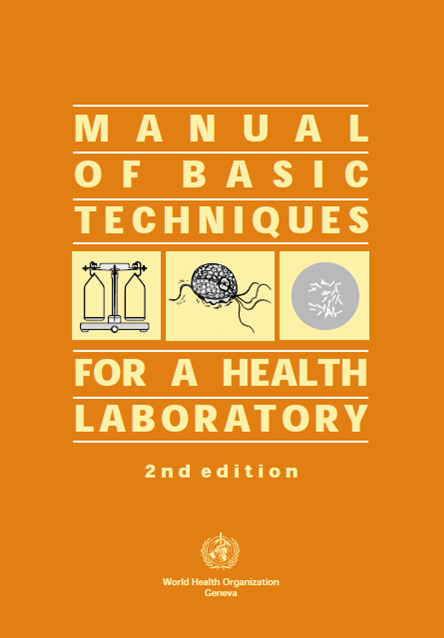
This article is part of the network’s archive of useful research information. This article is closed to new comments due to inactivity. We welcome new content which can be done by submitting an article for review or take part in discussions in an open topic or submit a blog post to take your discussions online.
The Manual of Basic Techniques for a Health Laboratory, published by the WHO in 2003, is a very useful and pragmatic guide book for setting up, equipping and running a health laboratory, called. It is available by the WHO to download for free via this link.
It is intended for use mainly in medical laboratories in developing countries, particularly in peripheral laboratories (e.g. small or medium-sized laboratories attached to regional hospitals), and in dispensaries and rural health centres where, often, one technician has to work alone.
The examination described can be carried out with a microscope or another simple apparatus, e.g. stool examination for helminth eggs, blood examination for malaria parasites, or a differential leukocyte count. It also provides guidance on the identification of the different parasites found in human specimens, how chemical reagents are being prepared, calibration of laboratory equipment, and much more.
It would be great to hear about users' experiences with the guide - are there any subjects that are missing, or should be described in more detail? Please leave your feedback below!

Useful Resources
Related Articles
-
Institutional maternal and perinatal deaths: a review of 40 low and middle income countries
BY Bailey et al -
Zika virus in asymptomatic blood donors in Martinique
BY Gallian et al. -
Antimicrobial Resistance and Immunisation
BY Authors: Sarah Bunn; Catherine Hall -
Biological Informatics Research Training in Health
BY M. Lesosky, C. Reddy -
The International Stroke Trial database
BY Peter AG Sandercock, Maciej Niewada, Anna Członkowska, the International Stroke Trial Collaborative Group